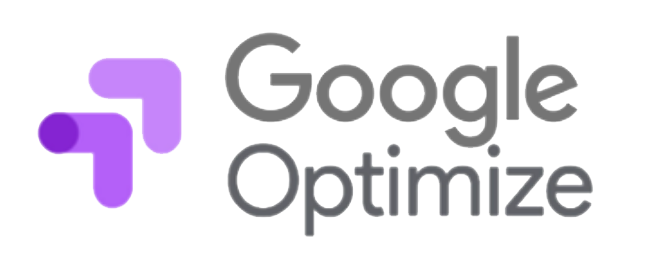Page Speed Optimization
What is Page Speed Optimization?
Page speed optimization refers to the process of improving the loading speed and performance of web pages. It involves various techniques and optimizations which aim at reducing the time it takes for a web page to load and improving the overall user experience.
In today’s fast-paced digital world, where users have high expectations for website performance, page speed optimization is crucial. Slow-loading websites can lead to a poor user experience, high bounce rates, and decreased conversions. Therefore, businesses and website owners strive to optimize their web pages for faster load times.

Contrast Between Page Speed And Site Speed
Page Speed:
Page speed specifically refers to the loading speed of an individual web page. It measures how quickly a single web page’s content is displayed to the user.
It includes factors such as the time it takes for the HTML, CSS, JavaScript, images, and other assets to load and render on the user’s browser.
Page speed optimization focuses on optimizing specific web pages to improve their loading times. It involves techniques like file compression, image optimization, caching, and minimizing redirects and server response time.
The goal of page speed optimization is to ensure that a particular page loads quickly and provides an optimal user experience.
Site Speed:
Site speed, on the other hand, refers to the overall performance and loading speed of an entire website. It considers the collective speed and performance of all the web pages within a website.
Site speed takes into account factors such as the average loading time of multiple pages, the interactivity and responsiveness of the website, and the performance of various components across the entire site.
Site speed optimization involves optimizing the website as a whole, rather than focusing on individual pages. It may include strategies like optimizing server configurations, using a content delivery network (CDN), minifying and combining files, and implementing caching mechanisms at the website level.
The objective of site speed optimization is to improve the overall performance and loading times of all pages within a website.
Why Evaluate Ongoing Site Speed Optimization?
- Site speed directly impacts user experience. A slow-loading website frustrates visitors and may lead to higher bounce rates, decreased user engagement, and fewer conversions.
- Ongoing evaluation of site speed optimization helps maintain and improve your search engine rankings, ensuring your website remains competitive and visible to your target audience.
- Ongoing site speed evaluation allows you to optimize your website's performance specifically for mobile devices, providing a smooth browsing experience for mobile users and catering to their needs.
- Continuously evaluating site speed optimization helps identify and address any performance issues that could hinder conversions, ensuring a smooth and frictionless conversion process for your users.
- Our ongoing evaluation of site speed optimization allows you to stay up to date with the latest best practices, techniques, and tools for improving website performance. Regular evaluation of your site speed optimization allows you to benchmark your performance against your competitors and identify areas for improvement
Advantages Of Page Speed Optimization

Improve Your Search Engine Ranking
Search engines, like Google, consider page speed as a valuable ranking factor. Fast loading is likely to rank higher in the search engine, leading to increased organic visibility and traffic. By optimizing page speed, you improve your chances of ranking well in search engine results pages (SERPs), attracting more organic traffic and potential customers.

Improve Your Conversion Rates
Page speed optimization has a direct impact on conversion rates. Studies have shown that even a one-second delay in page load time can result in lower conversion rates. By improving page speed, hence you can create a smoother and more efficient user journey, reducing barriers to conversions and increasing the likelihood of visitors through completing the desired actions. Such as making a purchase, filling out a form, or subscribing to a newsletter.

Fast And Seamless User Experience
In today’s competitive online landscape, providing a fast and seamless user experience can give you a competitive edge. If your website loads faster than your competitors, you are likely to capture and retain the attention of visitors, gain their trust, and stand out in your industry.

Improve The SEO Performances
Page speed optimization positively impacts overall SEO performance. Fast-loading pages contribute to better crawling ability and indexing by search engine bots, which can improve the discoverability and visibility of your website’s content. Additionally, users are likely to share and link to fast-loading pages, which can positively impact your backlink profile and overall SEO efforts.
Causes Of Slow Page Loading Time
Excessive HTTP Requests
Each element on a web page, including images, scripts, CSS files, and fonts, requires an HTTP request to the server.
Poor Server Performance
The performance and responsiveness of the web server hosting the website can impact page loading times.
Slow DNS Lookup
DNS lookup is the process of translating a domain name into an IP address.
Geographic Distance
The physical distance between the user and the web server hosting the website can affect page loading times.
Top 3 Website Optimization Tools To Help With Page Speed
1. Google Search Console
The Google search performance report provides data on how your website is performing in Google search results. It shows information about clicks, impressions, average position, and click-through rate (CTR) for specific keywords and pages. You can analyze search queries, identify top-performing pages, and track changes in search visibility over time.
The Index Coverage report displays the indexing status of your website’s pages. It shows which pages are indexed, which are not, and any issues that may prevent Google from indexing certain pages. This report helps you identify and resolve indexing errors, such as crawl errors, blocked pages, or duplicate content.


2. Google Optimize
Google Optimize enables you to create and run A/B tests to compare different variations of a webpage. You can make changes to elements like headlines, images, buttons, or layouts and test them simultaneously to determine which variation performs better in terms of user engagement, conversions, or other predefined goals. A/B testing helps you make data-driven decisions to optimize your website’s performance.
Google Optimize offers a visual editor that allows you to make changes to your website’s content and design without the need for coding. You can modify text, images, colors, and other visual elements directly on the page and see the changes in real time. The visual editor simplifies the process of creating and implementing A/B tests or personalization experiments, making it accessible to users without technical expertise.
3. GT Metrix
GTmetrix analyzes your website’s page speed performance by measuring various metrics. These include page load time, total page size, number of requests, and more. It provides scores based on industry-standard metrics like PageSpeed Score (provided by Google) and YSlow Score (provided by Yahoo). These scores give you a quick overview of your website’s performance.
GTmetrix allows you to set up performance monitoring for your website. You can schedule regular tests to monitor your site’s performance over time and track improvements or regressions. This feature helps you keep a close eye on your website’s performance and identify any issues that may arise.

